Digital inclinometer is a small angle measurement gauge, it can be used to measure for the horizontal position of the inclination, the two parts of the mutual parallelism and perpendicularity, machine tools, instruments, the straightness of the guideway, the flatness of the table, as well as the flatness of the plate, etc., and has a very broad application prospects.
Digital inclinometer working principle
The overall hardware design principle of the inclinometer is shown in Figure 1, which consists of a sensor, a preamplifier circuit, an A/D conversion circuit and a microcontroller system. The sensor collects the acceleration information and outputs the voltage value after internal conversion, which is divided into two channels, one measuring the acceleration in the X-axis direction; the other measuring the acceleration in the Y-axis direction. The two voltage signals after low-pass filtering, operational amplifier amplification processing output amplified voltage to the A/D conversion module, A/D conversion module output 8-bit digital to the microcontroller for processing, the microcontroller finally output the serial data, through the digital tube display circuit output platform tilt angle.
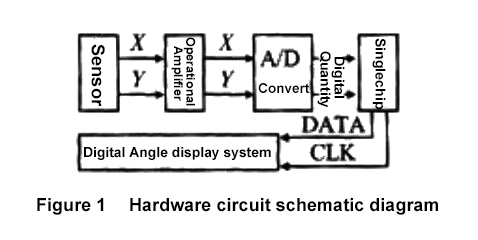
Sensor working principle
A thermal convection accelerometer comprises a closed cavity filled with a fluid, wherein a heating element will heat the fluid around the heating element in the cavity, the heated fluid expands and decreases in density, rises under gravity, and the surrounding relatively cold fluid replenishes the empty position, so that the cycle repeats itself resulting in a convective heat conduction. The temperature profile is symmetrical at rest, and in the presence of acceleration, the natural convective heat transfer makes acceleration in any direction disturb the temperature, causing temperature asymmetry. Therefore, the temperatures and output voltages of the four thermopiles in the accelerometer are different. The output voltages of the different thermopiles are directly proportional to the acceleration. On the accelerometer they have 2 identical acceleration signal channels. One measures the acceleration in the X-axis direction; the other measures the acceleration in the Y-axis direction, and its peripheral circuit is shown in Figure 2.
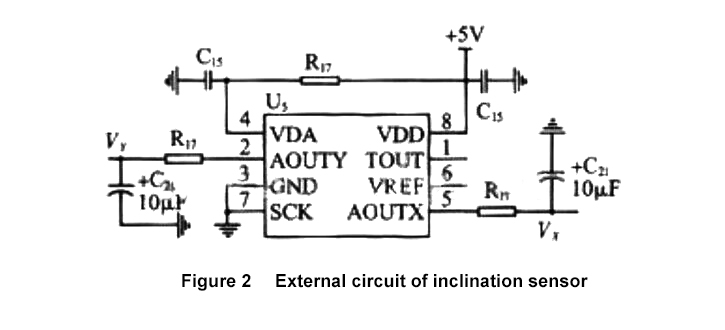
Operational amplifiers, A/D conversion and display circuits
In sensor applications, high impedance preamplifiers have 2 main roles: one is to amplify the weak signal from the sensor; the other is to convert the high impedance output of the sensor to a low impedance output.
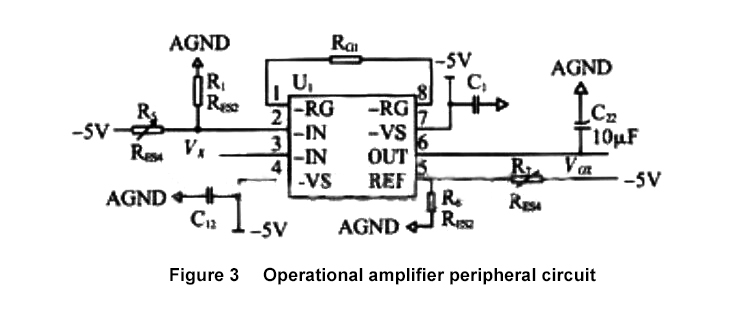
Operational amplifiers can simultaneously perform the functions of subtraction, addition, and amplification. The signal VX output from the sensor is first subtracted from its zero voltage when it is in the horizontal direction, and then, after being amplified by a factor of G, it is added to the reference voltage.
Experimental results and data processing
In the process of experimental data processing, multiple sets of data are measured and the arithmetic mean is taken as the final measured result, therefore, the uncertainty* fixing criterion of the arithmetic mean must be studied. If the same conditions, the same value for the same series of repeated measurements, each series of measurements have an arithmetic mean, due to the existence of random error, the arithmetic mean of each measurement column is not the same, they are around the true value of the measurement has a certain degree of dispersion, this dispersion illustrates the uncertainty of the arithmetic mean, and the arithmetic mean standard deviation σ is a parameter that characterises the dispersion of the arithmetic mean of the same measurement of the various independent measurement columns. The standard deviation of the arithmetic mean, σ, is a parameter characterising the dispersion of the independent columns of measurements of the same measurement and can be used as a criterion for the uncertainty of the arithmetic mean. The arithmetic mean x is known to be
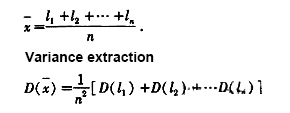
It can be seen that, in n measurements of equal precision measurement column, the standard deviation of the arithmetic mean for a single measurement of the standard deviation of the , when the number of measurements n the larger, the arithmetic mean is closer to the true value of the measurement, the higher the measurement accuracy. Increase the number of measurements can improve the accuracy of the measurement, but the above formula can also be seen: the measurement accuracy and the square root of the number of measurements is inversely proportional to the square root of the number of measurements, therefore, in order to significantly improve the accuracy of the measurement, it must be more labour. And the practice also shows that: after n>10, σ-x has been reduced very slowly. In addition, since the larger the number of measurements, the more difficult it is also to ensure that the measurement conditions are constant and new errors may be introduced, in general, n = 10. Therefore, in the experiment, the arithmetic mean of the 10 measurements was taken as the final measurement result. The voltage-dip relationship curves plotted after measurement are shown in Figs. 5 and 6.
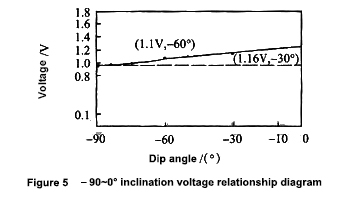
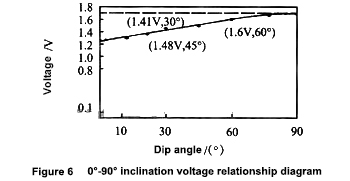
For more information on digital inclinometers visit sisco.com.

